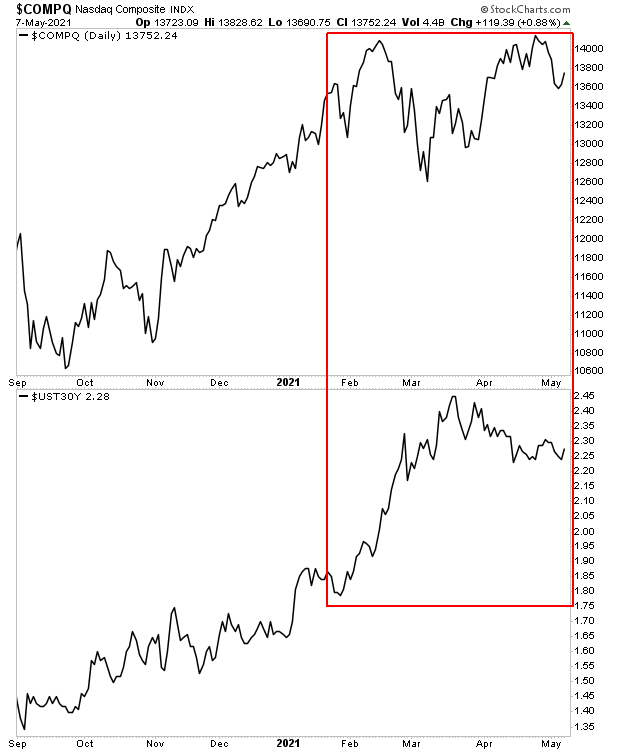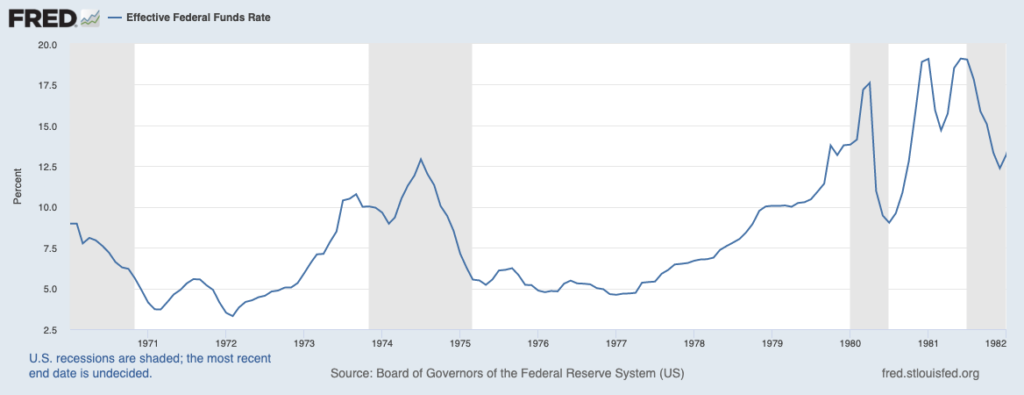Over the last few articles, we’ve outlined the following:
1) Inflation first appeared in the financial system in August 2020 and has since accelerated.
2) This has hurt Tech stocks in a big way, which is why they have collapsed.
3) The last two times inflation appeared in the financial system (2010-2011 and the 1970s, respectively), the Fed was forced to either engage in stealth tapering or outright monetary tightening.
4) Those Fed actions resulted in the broader stock market as represented by the S&P 500, falling 20% and 50% respectively.
In light of all of this, what is going to happen to stocks this time around? Will inflation force the Fed to do a stealth taper… or will the Fed get aggressive?
Right now, the answer is truly astonishing… it’s NEITHER.
Indeed, going by recent Fed statements, the Fed is not interested in tightening monetary…at all.
In February, Mary Daly, President of the San Francisco Fed said earlier this week that inflationary pressures are now “downward,” meaning inflation is disappearing. She also added it’s “not time to worry about inflation risks right now.” And that doing so would cost the economy jobs.
That same month, Boston Fed President Eric Rosengren commented that inflation is not likely to hit the Fed’s target until 2022. He was followed by NY Fed President John Williams who told CNBC that rising prices are due to “optimism” about the growing economy.
Bear in mind, inflation was well above 3% in February already.
It’s tempting to simply argue that Fed officials are ignorant of the economic realities facing most Americans because they live in a bubble surrounded by other policymakers and bank officials from the top 0.1% of society.
However, we can put that view to rest since the Fed’s Beige Book, which serves as its primary source for what the real economy is doing, had the following statement in its March report, “businesses in most sectors expect fairly widespread increases in the prices they pay in the months ahead…”
That was followed up in April Beige Book with: “Prices accelerated slightly since the last report, with many Districts reporting moderate price increases and some saying prices rose more robustly. Input costs rose across the board, but especially in the manufacturing, construction, retail, and transportation sectors—specifically, metals, lumber, food, and fuel prices.”
So… for the Fed to claim it doesn’t see inflation, would mean it is either willfully ignorant… or simply doesn’t even bother reading its own economic reports.
Since those Beige Books were published time, one by one Fed officials have taken up the theme that inflation is indeed appearing, but it is “transitory.”
What the Fed means by this is that they don’t need to do anything because the inflation will disappear naturally as the U.S. economy continues to reopen.
A reopening economy means even greater demand being placed on the same supply chain issues/ rising commodity prices. Moreover, even if the economy remains weak, it’s not as though inflation will disappear by itself either (the stagflation of the 1970s proved that you can have both a recession AND high inflation simultaneously).
I cannot claim to read Fed officials’ minds, so I have no idea if they actually believe this nonsense. All I can say is that the Fed is embracing the narrative that inflation has arrived, but it’s too soon to act because said inflation is “transitory” and will disappear by itself.
Indeed, most recently I’ve seen several Fed Presidents claim that inflation if rises above the Fed’s target of 2% (say to 2.75% or even 3%), it’s not a big deal.
Bear in mind, inflation is already well over 3% now.
So, what does this mean?
The Fed will continue to keep interest rates at zero, while printing $125 billion per month all while ignoring the countless signals that inflation is already spiraling out of control.
Which means… inflation is going to rage and rage.
On that note, we just published a Special Investment Report concerning FIVE secret investments you can use to make inflation pay you as it rips through the financial system in the months ahead.
The report is titled Survive the Inflationary Storm. And it explains in very simply terms how to make inflation PAY YOU.
We are making just 100 copies available to the public.
To pick up yours, swing by:
https://phoenixcapitalmarketing.com/inflationstorm.html
Best Regards
Graham Summers
Chief Market Strategist
Phoenix Capital Research










